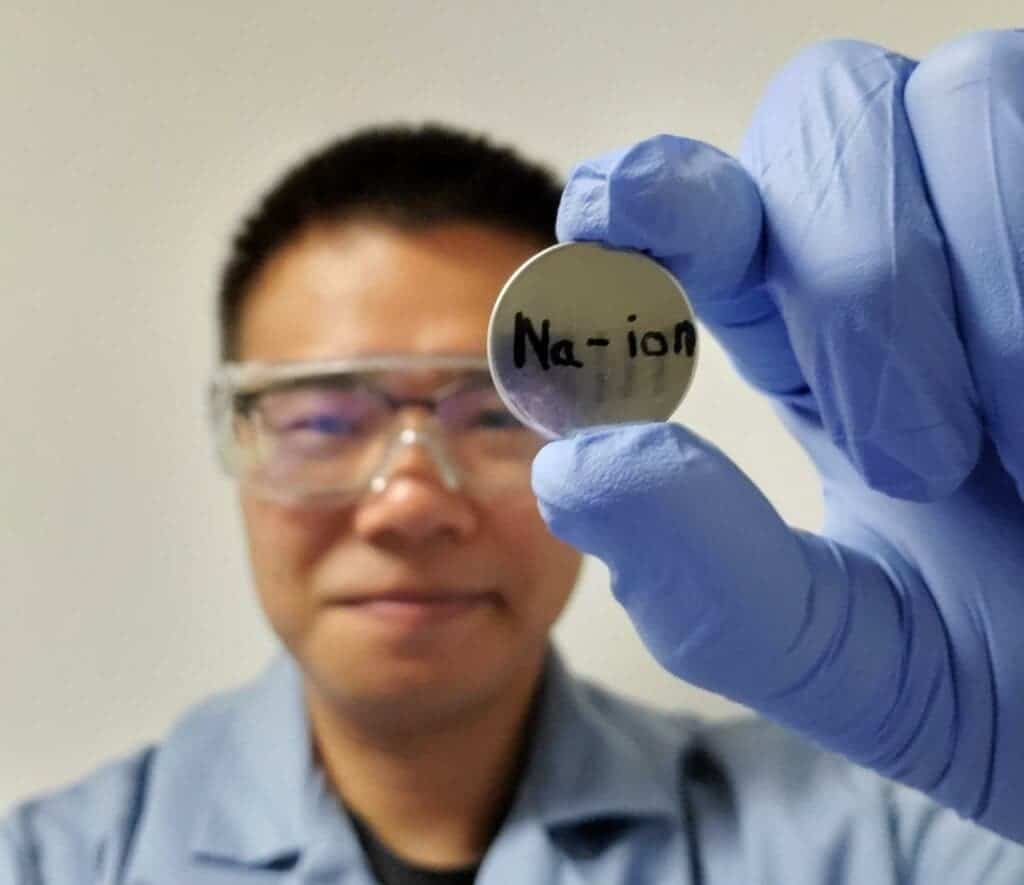
Researchers at Washington State University and Pacific Northwest National Laboratory published a paper today, describing the inner workings and surprising performances of a novel sodium-ion battery.
The energy storage system, which is based on cheap, abundant, and environmentally-friendly materials, can hold as much energy per mass and works comparable to some commercial lithium-ion batteries.
Is the future of energy storage rather salty?
Since they were first commercially introduced in 1999, lithium-ion batteries have become an integral part of modern life. They power virtually all smartphones, laptops, electric vehicles, and just about anything mobile that doesn’t need power chords.
But lithium-ion batteries also have their faults. Lithium is sometimes referred to as ‘white petroleum’, a nod to the fact that it is a finite resource with a major environmental impact. Lithium-ion batteries also incorporate cobalt and other rare earth minerals, which are expensive and require overseas imports. Their extraction is also extremely energy intensive and hurts the environment.
In contrast, sodium is naturally abundant and cheap, found everywhere from the Earth’s crust to the world’s oceans. Heck, you’ll find it in every kitchen.
“This is a major development for sodium-ion batteries,” said Dr. Imre Gyuk, director of Energy Storage for the Department of Energy’s Office of Electricity who supported this work at PNNL. “There is great interest around the potential for replacing Li-ion batteries with Na-ion in many applications.”
Researchers have experimented with sodium-ion batteries in the past, but performances have always been modest at best — until now.
The new energy storage system based on sodium-ions is made of a layered metal oxide cathode and a liquid electrolyte with extra sodium ions.
This design allows for a continuous movement of sodium ions, preventing the build-up of inactive sodium crystals at the cathode’s surface. Previously, this clustering of sodium crystals disrupted the flow of sodium ions, eventually ruining the battery.
“The key challenge is for the battery to have both high energy density and a good cycle life,” said Junhua Song, lead author of the new study and a Washington State University Ph.D. graduate who is now working at Lawrence Berkeley National Laboratory.
According to the findings published in the journal ACS Energy Letters, the sodium-ion battery divers a relatively high specific capacity of 196 mAh/g and retained more than 80% of its capacity after 1000 cycles.
This is comparable with some lithium cells that have specific cathode capacities of 150-200 mAh/g.
“Our research revealed the essential correlation between cathode structure evolution and surface interaction with the electrolyte,” said Yuehe Lin, lead author of the new study and a professor at WSU’s School of Mechanical and Materials Engineering. “These are the best results ever reported for a sodium-ion battery with a layered cathode, showing that this is a viable technology that can be comparable to lithium-ion batteries.”
Lin and colleagues are now focused on gaining better insights into how the electrolyte and cathode interact in order to trial new materials that might improve the battery’s performance.
The researchers are now working to better understand the important interaction between their electrolyte and the cathode, so they can work with different materials for improved battery design.
And, as a caveat, translating performance in the lab to commercial success is a huge leap. Battery development is incredibly tricky and frustrating. Bearing that mind, it’s no wonder that lithium-ion batteries are still reigning supreme after two decades since they first appeared commercially, despite the frequent headlines that praise “new” and “novel” designs.
But perhaps sodium-ion batteries can find their niche and supplement li-ion energy systems. Take electric vehicles, for instance: while sodium-ion batteries might not have the energy density of lithium-ion, what they lack in range they might make up for in cost. Drivers could swap their batteries every 100 miles, for instance, in a few minutes while enjoying the privilege of owning an electric car at 40-50% of today’s retail price.
“This work paves the way toward practical sodium-ion batteries and the fundamental insights we gained about the cathode-electrolyte interaction shed light on how we might develop future cobalt-free or low-cobalt cathode materials in sodium-ion batteries, as well as in other types of battery chemistries,” Song said. “If we can find viable alternatives to both lithium and cobalt, the sodium-ion battery could truly be competitive with lithium-ion batteries”.
Was this helpful?



